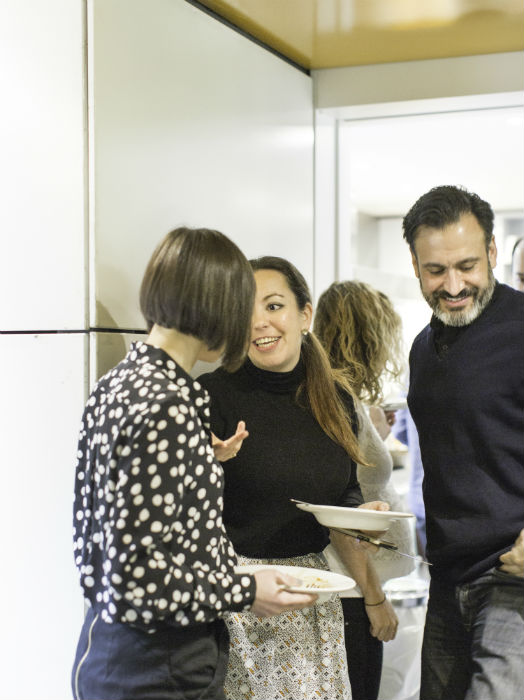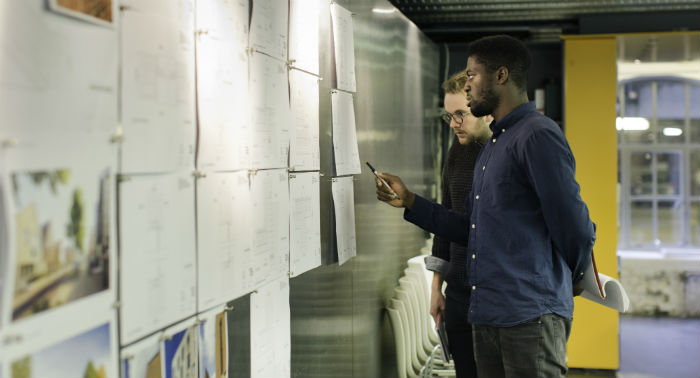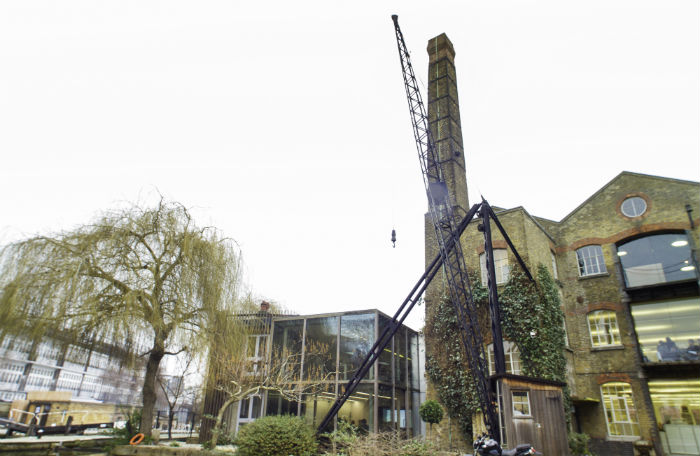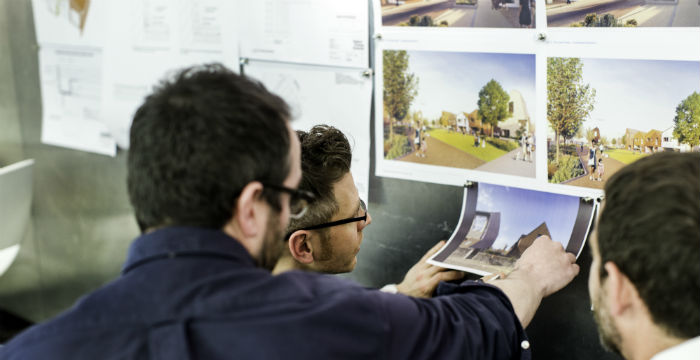Pollard Thomas Edwards - Practice Role Model
Generating a positive working environment and relationships
How might people describe us? They would probably mention that our last party was really good and our offices are stunning. That may sound like a frivolous response but we are very serious about creating a positive working environment, both within and beyond the practice. Our projects can go on for years, so we nurture good relationships with each other and everyone else involved; including clients, residents, planners and contractors.
We concentrate on building a strong team ethos, where everyone has a shared investment in making the project a success.

Our Thursday lunch tradition is one place where you can see our culture come to life. We take it in turns to cook for the whole practice, which is now 150 strong, so it’s a serious undertaking. You get to sit down with your colleagues and offload, share what you’re doing and laugh about whatever it is you’re not doing. It’s about nourishing your team. Everyone’s busy but we prioritise this one point every week where we connect with one another. There is a risk in bigger practices that people can become just components of a machine. We want to be working in a place where people know and care about each other – there’s a basic humanity to it.
Encouraging people to solve problems and take responsibility
There’s a lot of patience around here. A young architect might be asked to hand-sketch something and that could be a skill they haven’t used in ages. They are encouraged to do and redo it, rather than handing the task on to someone else. You give them feedback but then they have the time to learn how to do it properly.
Partners aren’t oracles with all the answers. They are great people to bounce ideas off, and to offer suggestions to, but this practice is not dependent on any single individual coming up with all the ideas. We encourage everyone to question and we are more likely to get frustrated when people don’t challenge us.
We want people to think about problems laterally so they can see the things that we might have missed.

Instead of micromanaging, we put people in situations where they have to think for themselves.
At the same time, whenever there is a new project, a senior member of staff will sit down with members of the team to brief them properly. They’ll go through details of the various reports, the site constraints and opportunities, the financial implications and so on. Strictly speaking you may not need all that information but you learn from it. When you get to the position where you need to know more, you’ve already got this great background knowledge.
Responding flexibly to changing working patterns
Our role as a practice is to get the best out of people. It’s not about trying to shove everybody into a box. Working patterns are changing and we are responsive to that. We know we have a pretty diverse workforce and much of that is down to our flexibility. It not only encourages people to come to PTE but also to stay.

People have varied lives and will experience changes in their circumstances. We’ve got men in their 60s with elderly parents who need flexible hours to enable them to share caring responsibilities. It’s not just a parenting issue – we try to take a much broader look at what it means to be an inclusive workplace. For example, how do we keep that great project architect even though he wants to go and write once a week? We adapt; we have to and we want to.
Commiting to sustainability and having a positive social impact
We gravitate towards complex, messy, challenging sites. They bring another level of interest to what we do because architecture is about more than making handsome buildings. When we talk about sustainability, we refer to projects that knit communities back together and make them more likely to endure. It is part of a wider vision to design projects that last and have a positive social impact.

We feel a responsibility to make sure buildings work well, over time, for the people who live there. As well as committing to a robust consultation process, we go back a year after completion to ask people about the reality of living there. That makes us accountable for the work we do and ensures we take a long-term view.
Being a Practice Role Model means challenging preconceptions about ways of working
The profession can be pretty tough and you hear about some pretty uncompromising working practices. To get things done you don’t have to have a stressful environment where people are shouted at, or work ridiculous hours. It’s just not necessary and hopefully we can challenge some of those preconceptions.
Pollard Thomas Edwards is one of nine Practice Role Models which represent our vision of what it means to be a successful RIBA Chartered Practice. Find out more about the Practice Role Model project and the other eight practices.






